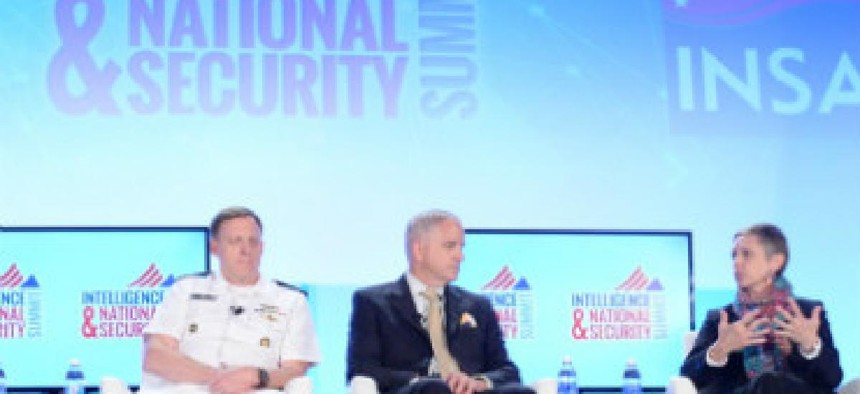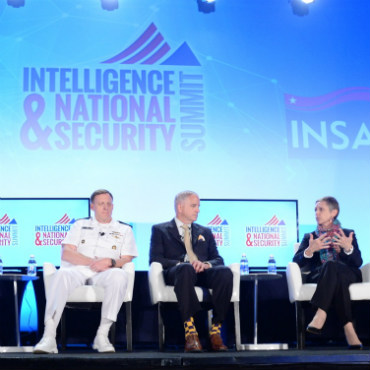Spy chiefs set sights on AI and cyber

Harnessing data and disruptive technology, such as artificial intelligence, to detect and thwart cyber threats is the IC’s top challenge.

L-R: Adm. Mike Rogers, NSA director; Robert Cardillo, NGA director; Melissa Drisko, deputy director DIA. (Photo credit: Herman Farrer)
The nation's intelligence directors are in agreement: the ability to harness data and artificial intelligence is a major priority for the intelligence community.
During a Sept. 7 panel discussion at the Intelligence and National Security Summit in Washington, D.C., directors and deputies representing five branches of the intelligence community, including the National Security Agency, FBI, Defense Intelligence Agency and the National Geospatial-Intelligence Agency, zeroed in on the need to push past proficiency in AI and cyber.
"We have to be much more data-centric, much more savvy in how we handle data," said Melissa Drisko, the Defense Intelligence Agency's deputy director. "There are secrets there that we got to find. It's how do you find those."
"As we're looking at algorithmic analysis, artificial intelligence, machine learning, we're finding the we're having to examine what the role of the human and the analyst," she said. "It's kind of scary…but what's the role, what do we look like in 10 years…and even as we try to define it does that make [the role of the analyst] obsolete."
But for a community that values the tangible, new technology carries risks that only humans can mitigate.
"The bedrock of our profession is credibility, it is trust," said National Geospatial-Intelligence Agency Director Robert Cardillo. But as the community embraces AI, "We've got to hold on to credibility or we'll lose our lifeline."
For Navy Adm. Michael Rogers, NSA director and head of U.S. Cyber Command, embracing technology doesn't mean losing the human element, even when there's a risk.
"I don't see us abdicating everything to a machine," he said. "I see us asking ourselves 'so where does [using] this technology make sense.'"
Cyber threats and the ability to handle them were another top concern.
"The [cyber] domain is blurry, it intersects each other," said the principal deputy director of national intelligence, Sue Gordon, who spoke separately at the same conference.
When it comes to cyber "we need to get our act together," Gordon said. "Ninety percent of the issue is not government owned. The private sector, it's the vectors, who are the target. But what we have is the ability to know things somewhat in advance… how do you get together in a trusted way to be able to share what you have" and protect the nation.
Ultimately, the issue comes down to privacy, she said, and balancing the public's concerns around digital privacy.
"We need to engage a conversation with the American people. The whole security and privacy is often set up as an either-or," Gordon said. "We're going to have to reframe the conversation."
NEXT STORY: Hacking the human component of cyber readiness



